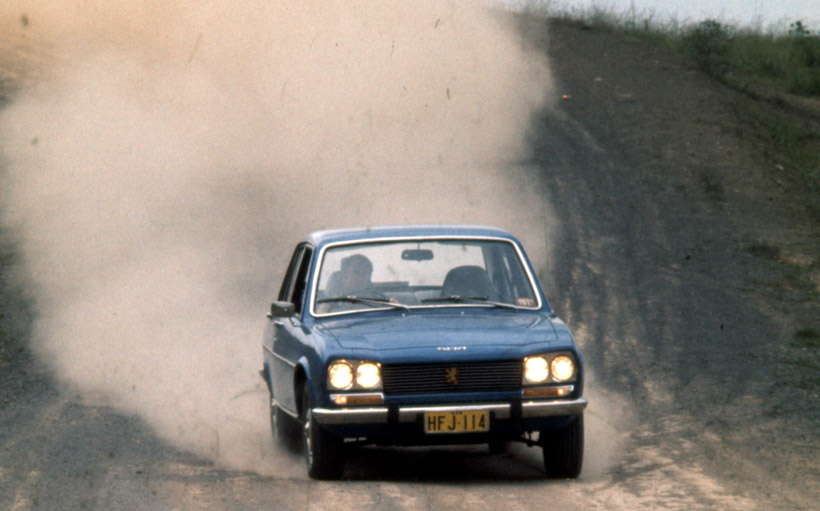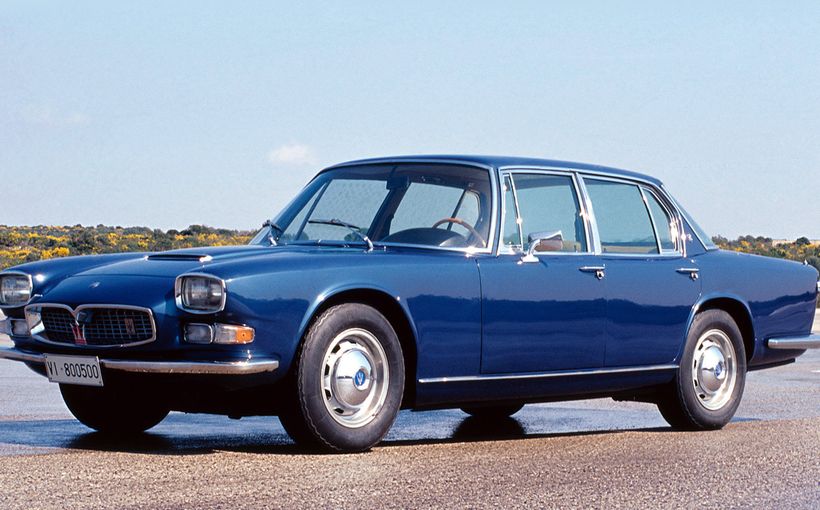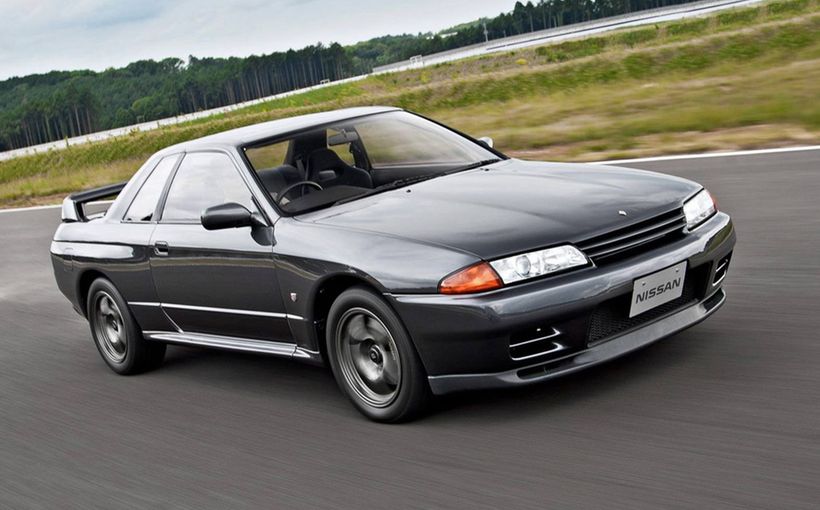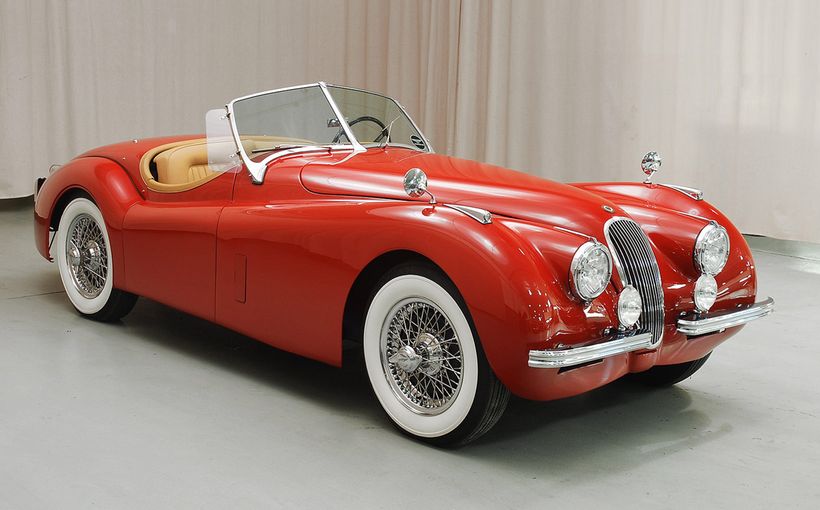1970-81 Peugeot 504: French Lion Roars in the Land of Oz
It’s difficult to understand the character of the Peugeot 504 without knowing how it evolved from the great little 203 through the 403 and 404. The product planners at Peugeot perfected the art of automotive evolution. As if to emphasise the remarkable continuity between models, each new car did not make the previous one instantly superfluous, so that you could still buy a new 203 after the 403 was released, a 403 when the 404 arrived and a 404 when the 504 finally made its local debut, nearly two years after its introduction in Europe.
Imagine the EH Holden remaining on sale after the HD was released! Or the FJ once the FE had hit the streets.

At the announcement of the Peugeot-Citroën merger came in 1974, the 404 was still available in Europe as a cheaper alternative to the 504 which was offered with either the original 1.8-litre four or the bored-out 2.0-litre unit. This engine could trace its ancestry directly to the 203 where its capacity was just 1290cc.
Having developed a template with the 203, which made its name forever in Australia by winning the first Redex Round Australia Trial in 1953, the Peugeot product planners simply made sure each successive model offered more of the same. Hallmarks were adroit handling, sharp steering, excellent ride, remarkable rough road ability, durability, comfort, and performance beyond expectation for engine size, along with laidback cruising and remarkable point-to-point ability. No question, in 1953 given a choice between a Holden 48-215 and a 203 to tackle an interstate journey, you’d choose the Pug. And 20 years on, you’d have a 504 rather than an HQ Premier (with or without a V8 engine).
The 504 garnered more than 50 per cent of the votes to win the 1968 European Car of the Year Award. Considering this was also the year of the Jaguar XJ6 makes the achievement even more impressive.

By the time the 504 was released here in May 1970, the Peugeot brand had amassed great respect. This helps to explain why sales were strong, even though the new model sold in a higher price class than any of its predecessors. From being priced at around Holden Special and then Holden Kingswood levels, the 1.8-litre 504 had to compete with a well-optioned Holden Premier or Ford Fairmont. Fair enough, I guess, when you consider that the 504 really was considerably more car for money.
Like the 404 the new car was assembled on a site near the 1956 Olympic Village in Heidelberg, Victoria. Amazingly, given the rivalry between the two marques, it was Renault Australia which controlled the operation, having acquired the assembly plant formerly owned by Continental and General Distributors. Cars such as the Renault 12 and 16 and the Peugeot 404 boasted a very high percentage of local content and were priced competitively. But this percentage dropped sharply (from about 65 per cent to 38) with the 504 and this accounted for some of the price increase.
If the success of the 203 gave the Peugeot brand a good name, it was the loyalty of owners which sustained it. One-marque loyalty (fanaticism even!) was probably stronger for Peugeot than any other European marque (with the possible exception of Volkswagen) through the 1953-1970 era.

What was it about all these Peugeots that appealed so much to converts? Perhaps the key concepts were effortlessness and poise. My father bought a near-new 404 in the autumn of 1967. It stayed in the family for about eight years and I owned it for a year or so. It was not a conspicuously fast car but it cruised with great refinement and with almost no road or wind noise at 70 miles per hour (112km/h) and just a gentle hum from the engine. The ride comfort was remarkable over all surfaces. It was sporty to drive with superbly communicative rack and pinion steering and eager turn-in. On Michelin XAS radials it felt like a sports car on winding mountain roads. And those big, soft front seats reclined to make a comfortable camping bed. The boot was deceptively large for the modest overall size of the car.

Essentially, the 504 offered more of the same. In 1.8-litre guise it was not much more accelerative but it did boast a useful increase in top speed, up from about 92 miles per hour for the last of the 404s (80 brake horsepower) to just on 100, which was better than you would have expected from just eight more brake horsepower in a heavier car, but superior aerodynamics make a big difference at higher speeds.
The 504’s fully independent rear suspension made for an even plusher ride and higher limits on rough roads. And, joyously, the gearlever had moved from the steering column to the floor.
This was a distinctive looking car, styled by Pininfarina as were the 404 and the 403 before it. The 403 had been distinctive in appearance, but unfortunately for the Peugeot marketing executives, the finny, slab-sided style of the 404 was remarkably similar to a Fiat 1800/2100/2300 or, more embarrassingly, to the English Austin A60/Morris Oxford/Wolseley 15/60/MG Magnette. Yes, Pininfarina styled them all and they were briefly fashionable in the 1959-1962 period. (While the Peugeot 404 is still much celebrated, the BMC badge-engineered family sedans and the Fiats are all but forgotten.)
The 504, by contrast, did not share its Pininfarina theme with any other sedan and it also yielded a gorgeous coupe and an astonishingly useful wagon, of which more later.

The Kugelfischer fuel-injected variant of the 404 was never officially sold in Australia but from 1973 an injected 504, badged ‘Ti’, with 103 brake horsepower and a top speed of 107 miles per hour kept the carburetted 504 fast company. By this stage engine capacity was up from 1.8 to 2.0 litres and the 504 was better able to realise its potential as a sporty car, rather then merely one of the most comfortable on the entire market. You really needed a Jaguar XJ to enjoy a more cosseting interstate trip (and with the Jag you couldn’t always be sure of reaching your destination – in the car you started in, that is!).
Peugeot, who had been slow to provide disc brakes even on the front wheels of the 404, equipped the 504 with them all-round. As for the independent rear suspension, it was of a far more sophisticated and effective variety than that used by the similarly priced Triumph 2.5 Pi.
The wet-sleeve 1.8-litre four was still slightly oversquare despite having been bored from 1618cc to 1796. As in the 404 it was canted over at 45 degrees to allow a low bonnet line
No question, the Peugeot 504 joined Australian traffic during one of the most exciting periods of Australian motoring. I was biased at the time because I got my first car in 1968 but all these years on it is easy to see how much was changing. One of my favourite cars of 1968 was the Fiat 125, at least in part because I drove a Fiat 1100. No question, the 125 (the first one I saw was a lovely teal blue colour) was more dramatic and exciting than my dad’s dark green 404, but when the 504 reached the scene that Fiat was looking and feeling distinctly old-fashioned with its firm, sometimes bouncy, ride and semi-elliptic rear suspension. Yes, it would nudge a true 100 miles per hour but only with the tachometer in the start of the red zone at 6300rpm.

In a sense, for Australia, the 504 represented the true beginning of the 1970s, while the frenetic Fiat 125 was a car of the past. And the 1970s gave us much to celebrate. We couldn’t have known it at the time but the world was about to switch to front-wheel drive. Renault Australia was assembling the Renault 16 when the 504 began its journey down the line in Heidelberg. The Renault 12 was coming. Both the 12 and 16 were front-drivers and marked pretty much the serious beginning of the European industry’s almost complete switch. After the 504 there was only one more mid-size rear-driver from Peugeot, the 505. But to my mind the 504 was a far better car of its time than the largely forgotten 505 would be. The 505 was good enough but the rest of the world was catching up and in some cases had caught up. It lacked something of the rock-solid feel of its predecessor and offered little serious advancement, even though a decade had disappeared beneath its Michelin-shod wheels.
In the first half of the ’70s no car of the price could match the 504, especially the Ti variant. Perhaps the most interesting comparison is with the BMW 2500. BMW introduced its luxury twins, the 2500 and 2800 to Australia in 1970. At $7290 the cheaper of the two was more than double the price of the Peugeot in 1.8-litre carburettor form. Sure, it was much quicker. But in other respects the cars were surprisingly close. The BMW rode well but slightly more firmly. Marks on handling were about even. For a car of its price the BMW had an austere, if beautifully detailed, interior, but you could hardly call it more comfortable than the 504 and there was less room for rear occupants. And both cars were equally happy cruising at 150km/h, even if the 2500 had more in reserve at this speed. Either was far more refined than any of the homegrown six-cylinder and V8 sedans.

As further proof of its general design brilliance, the 504 was also offered as a seven-seater wagon with an immense load capacity. These are highly prized by collectors.
It may sound like a cliché, but the Peugeot 504 marked the end of an era. Two major changes were either happening or about to happen. Rear-wheel drive was being replaced by front-wheel drive in all but the sports and luxury segments of international markets (with the notable exception of Australia). And national character in cars was giving way to international character. This process probably began in 1962 with the Ford Cortina, an English car named after an Italian town and designed to sell all around the world.
As the Japanese industry began to make its presence felt, the move towards this more international flavour gathered pace. In the 1950s and 1960s German cars were engineered to take maximum advantage of the autobahns. They had hard seats. By contrast, French cars had long travel suspension yielding a plush ride and copious body roll. Seats were soft. Alfas and Fiats were built for winding alpine passes. They had rorty, high-revving and relatively small capacity engines with power top gears (meaning the maximum speed was reached at maximum revs in top gear and soft seats). There was no mistaking a German car for an Italian, French or English one. And, of course, we know about Australian cars with their low-revving six-cylinder engines and six-seater capacity.
Exceptions to this international trend persisted such as Citroën (but the CX did not have a curious round button for a brake pedal like its famous DS predecessor!). Fiat replaced its 125 with the softer, blander 132. Volkswagen introduced its Passat followed shortly after by the Golf. And, by late 1978, ‘Australia’s Own’ Holden was a reworked Opel of broader international appeal than the HQ-HZ Holdens which were utterly Australian in character.
I owned a Fiat 125 and a Volkswagen Passat TS in the 1975-78 time frame. But during this period I also travelled between Melbourne and Noosa in a mate’s appallingly coloured Avocado 1974 Peugeot 504 GL. It was a comprehensively better car than either the 125 or Passat TS – more relaxed than the Fiat, more robust than the Volkswagen, and far better riding and quieter than either of ’em!
In my view the Peugeot 504 was one of the greatest cars not only of the 1970s but the whole twentieth century. It brought the values embodied in the 203 to perfection and had no close rival in its price range. As the move towards internationalism gathered momentum, the distinctiveness of the Peugeot marque was progressively diluted.









